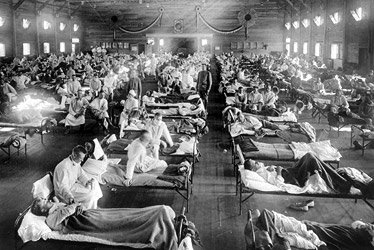
As the government warnings mount, an expert explains how we need to prepare for a possible pandemic
By CHRISTINE GORMAN
Posted Wednesday, Mar. 15, 2006
The official warnings about bird flu have been growing scarier in the past few days. In a speech last Sunday, Health and Human Services Secretary Mike Leavitt advised folks to stock up on tuna fish and powdered milk in case the bird flu virus mutates into a form that could easily infect people. Agriculture Secretary Mike Johanns recently told reporters, "It would be almost biblical to think we would be protected." Then there was Robert Webster, the noted flu virologist from St. Jude Children's Research Center, who said on national television Tuesday night that he had a three-month supply of food and water in his house in case bird flu becomes a serious human pandemic.
Scientists and government officials are usually supposed to calm people down, but these authorities seem to be trying to provoke greater fear, even a little panic. This is not necessarily such a bad thing, says Peter Sandman, a risk communications consultant based in Princeton, N.J., who has advised HHS officials in the past not to be too concerned about alarming the public when trying to educate them to a new danger.
"When they were listening to me many months ago, they didn’t agree with me," Sandman says. What happened to apparently change the attitude? President Bush read The Great Influenza, a book by John Barry about the devastating 1918-1919 pandemic. Then Hurricane Katrina devastated the Gulf Coast and revealed the consequences of poor or nonexistent planning.
Sandman argues that it’s hard to rouse folks from their usual day-to-day routine to prepare for a new threat without also triggering alarm. Besides, a little bit of panic helps folks prepare emotionally for what the future may hold. It’s a necessary kind of "adjustment reaction," he says, that allows folks to think about what they can and cannot do, so that when the crisis comes they don’t just dissolve into despair and inaction.
"This is the hardest kind of risk to focus on because it’s potentially huge but nobody knows if it will happen or how big it will be," the consultant says. One possibility is that bird flu will mutate and start infecting people easily, but the result is only a mild pandemic, like the flu pandemic of 1968. (Many people who were alive then still aren’t aware they lived through a pandemic.) In that case, people will wonder what all the fuss was about. But another possibility is that the pandemic will be severe—as bad as the 1918 pandemic or even worse. In such a worst-case situation, being prepared could mean the difference between life and death. The biggest problem, many experts believe, will not be the availability of medical care, but all the bottlenecks and breakdowns that will occur because so many people are sick or staying home from work because they fear getting sick.
People need to think about the possibility of these disruptions now, Sandman argues. What if you couldn’t get to a pharmacy for three months to fill a prescription for high blood pressure medication, placing you at greater risk of a heart attack or stroke? Have you thought about where and how you’d take care of someone in your family who got sick, to avoid infecting anyone else in the house? What if enough truck drivers who deliver chlorine to water treatment plants get sick that the water in your community is no longer treated? Is there a stock of water that you could rely on in such an emergency? Now might be a good time to get to know your neighbors better, since you may be depending on their kindness for deliveries of food. What’s the plan at your local church, school or office in the event of a human pandemic?
"We can do something about this," Sandman says. "We can stockpile chlorine for water treatment plants. We can make sure we have enough energy so we don’t freeze to death. We can do something for people with chronic conditions." Imagining the possibilities helps you to prepare emotionally and to figure out what precautions are reasonable to take. "You’re not completely ready, but you’re readier. You’re as ready as you can be."
Even if a severe pandemic occurs, Sandman points out, most people would probably survive. “Let’s say it kills 5% of infected people, which is twice as bad as 1918," he says. "That still means that 95% of people who get the flu have two weeks of hell and then they get better. And when they get better, long before the government makes a vaccine, they’ll be immune.” We should then figure out how to gather these immunized folks, Sandman says, into volunteer groups to do the jobs—like food and water deliveries—that might be needed for the next wave of the pandemic.
Sandman has some advice for journalists covering the bird flu as well: stop focusing so much on birds and other animals that get infected. "The problem with people focusing on bird flu and not a pandemic among humans is that as long as there’s no bird flu in town, they think they’re safe. We really need people to understand that it’s not about the birds. You’re not at any greater risk after a bird is found to be infected and you’re not any safer before an infected bird is found." The key moment will come if and when the bid flu mutates in such a way as to infect humans. Then it won't matter where the infected birds are; the new strain will quickly circle the globe.
No comments:
Post a Comment